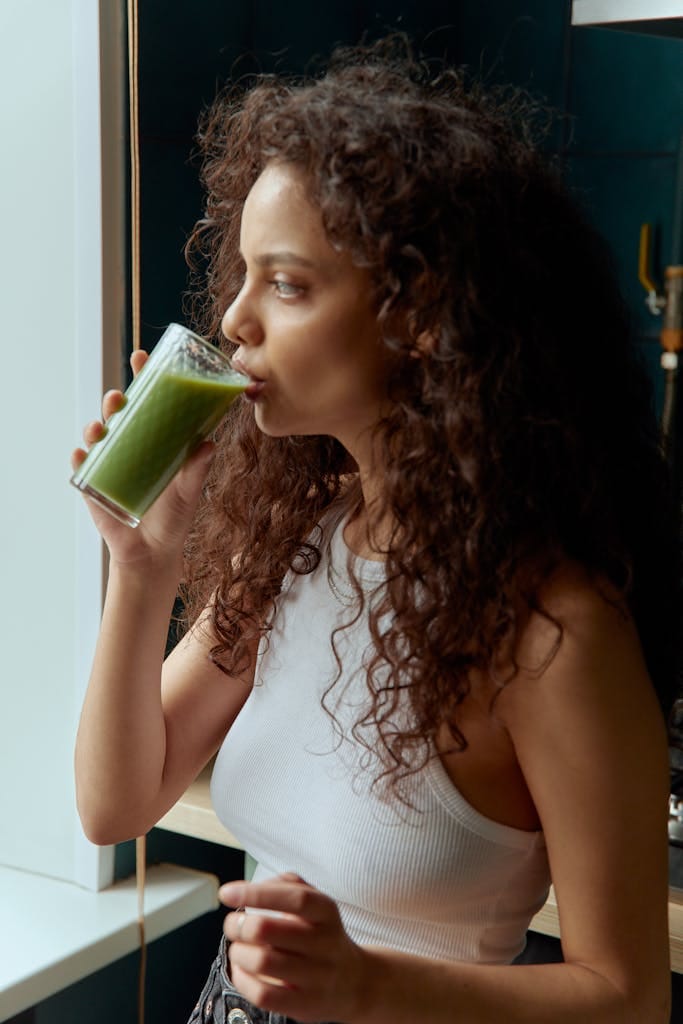FREE SHIPPING OVER $50
Try These 5 High-Protein Smoothie Ingredients Instead of Protein Powder
Protein powders are a convenient way to hit your daily protein goals, but what if you want a more natural, whole-food approach? Whether you’re avoiding additives, saving money, or just prefer real food, plenty of high-protein smoothie ingredients can replace protein powder—without sacrificing muscle gains.
In this article, we’ll break down five powerhouse ingredients that pack serious protein, along with tips to blend them into delicious, muscle-building smoothies.

Why Replace Protein Powder?
Before diving into alternatives, let’s look at why you might want to skip the scoop:
- Whole Foods Offer More Nutrients: Unlike processed protein powders, natural ingredients provide fiber, vitamins, and healthy fats for better digestion and overall health.
- No Additives or Sweeteners: Many protein powders contain artificial flavors, thickeners, or excess sugar—whole foods eliminate these concerns.
- Cost-Effective: Over time, ingredients like Greek yogurt or cottage cheese can be cheaper than premium protein powders.
- Better Satiety: Whole-food proteins digest slower, keeping you full longer and reducing cravings.
Now, let’s explore the top five protein-packed smoothie boosters.
5 High-Protein Smoothie Ingredients to Use Instead of Protein Powder
1. Greek Yogurt: The Creamy Protein Bomb
Why it works: With 15–20g of protein per cup, Greek yogurt is a smoothie staple. It’s also rich in probiotics for gut health and calcium for strong bones.
Best for: Thick, creamy textures (great for post-workout recovery).
How to use: Blend with berries, a banana, and a splash of almond milk.
2. Cottage Cheese: Slow-Digesting Casein Powerhouse
Why it works: Cottage cheese provides slow-digesting casein protein (about 14g per ½ cup), ideal for sustained muscle repair. It’s also high in leucine, a key amino acid for muscle growth.
Best for: Overnight muscle recovery or a filling breakfast.
How to use: Mix with pineapple, cinnamon, and almond butter for a “cheesecake” flavor.
3. Silken Tofu: Vegan Protein with Neutral Taste
Why it works: Silken tofu adds 8–10g of protein per ½ cup and blends smoothly without altering flavor. It’s also a great source of iron and calcium.
Best for: Dairy-free or vegan smoothies.
How to use: Combine with cocoa powder, banana, and peanut butter for a chocolatey shake.
4. Hemp Hearts: Plant-Based Protein with Healthy Fats
Why it works: These tiny seeds deliver 10g of protein per 3 tablespoons, plus omega-3s and fiber for heart health and digestion.
Best for: Nutty-flavored, nutrient-dense smoothies.
How to use: Blend with spinach, mango, and coconut water for a tropical twist.
5. Egg Whites: Pure Protein (No Fat or Carbs)
Why it works: Pasteurized egg whites offer about 6g of protein per ¼ cup—pure, low-calorie protein with no taste.
Best for: Athletes needing lean protein without extra calories.
How to use: Mix into a berry smoothie or a vanilla-cinnamon blend.
How to Build a Balanced High-Protein Smoothie
Replacing protein powder isn’t just about swapping ingredients—it’s about balancing macros for muscle growth and energy. Follow this simple formula:
- Protein Base: Pick one or two high-protein ingredients from the list above.
- Healthy Fats: Add nut butter, chia seeds, or avocado for satiety.
- Fiber-Rich Carbs: Use frozen fruit (berries, bananas) or oats for energy.
- Liquid: Opt for unsweetened almond milk, coconut water, or green tea.
- Boosters (Optional): Sprinkle in cinnamon, flaxseeds, or cacao for extra nutrients.
Sample Smoothie Recipes
Creamy Berry Recovery Smoothie
- 1 cup Greek yogurt
- ½ cup mixed berries
- 1 tbsp almond butter
- ½ cup spinach
- ¼ cup oats
- 1 cup unsweetened almond milk
Chocolate Peanut Butter Power Shake
- ½ cup silken tofu
- 1 banana
- 1 tbsp peanut butter
- 1 tbsp cocoa powder
- 1 cup coconut milk
Common Mistakes When Swapping Protein Powder
Avoid these pitfalls to keep your smoothies effective and tasty:
- Too Much Fiber at Once: Overloading on chia seeds or flax can cause bloating—stick to 1–2 tbsp.
- Skipping Flavor Enhancers: Cottage cheese and tofu can be bland—add cinnamon, vanilla, or fruit.
- Ignoring Protein Combos: Mix ingredients (e.g., Greek yogurt + hemp hearts) for a complete amino acid profile.
- Using Water as the Only Liquid: It dilutes flavor—opt for nut milk or coconut water instead.
Conclusion
Ditching protein powder doesn’t mean sacrificing protein—whole foods can be just as effective (if not better). By using ingredients like Greek yogurt, cottage cheese, or hemp hearts, you’ll get clean protein, better nutrition, and more satisfying smoothies.
Ready to blend? Try these alternatives and see how your energy, recovery, and taste buds improve. Cheers to real-food gains!
Related Articles
- This High-Protein Snack Can Help Lower Your Cholesterol, Say Dietitians
- The Unexpected Ingredient I Added to My Eggs That Boosted My Protein Intake
- How to Get 100 Grams of Protein a Day Without Feeling Like a Gym Rat
- 10 Signs Your Body Needs More Protein
- Eat These 5 High Protein Foods for a Jacked V-Shaped Torso



